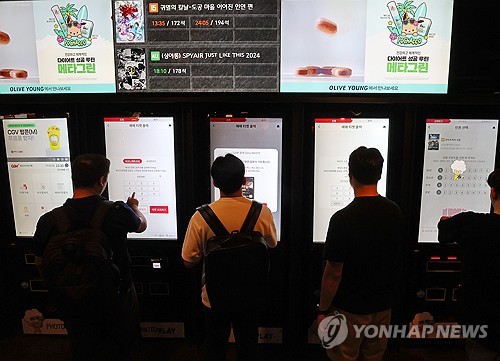South Korea's film industry is facing a crisis as both audiences and box-office revenue decline.
It has not recovered to pre-pandemic levels, and structural weakening is accelerating.
The wave of multiplex closures is an early warning from the field.
The path forward depends on cooperation and choices by government, the film industry, and streaming platforms.
Why the Korean film industry is failing — and which path to choose
History and current state
Let’s face the facts.
From 2017 to 2019, average annual revenue was ₩1.8282 trillion (about US$1.4 billion).
By 2024, revenue had fallen to ₩1.1945 trillion (about US$0.9 billion), or roughly 65.3% of the pre-pandemic level.
Audience numbers also plunged, from an average of 220.98 million admissions in 2017–2019 to 123.13 million in 2024.
Through the first half of 2025, only one film exceeded 3 million admissions.
A few titles had modest runs, but not enough to stop the market from shrinking.
Some multiplex locations have already closed their doors, a visible sign of the industry’s strain.
Causes
The causes are multiple.
First, audience behavior changed during the pandemic and has not fully reverted.
Second, the rise of OTT (streaming platforms) has shifted viewing habits away from theaters.
Third, high ticket prices and steep operating costs weigh on theater operators.
Rising production and marketing budgets increase the pressure to recoup investments.
Uncertain box-office prospects make distributors more cautious about which films to back.
The result is less diversity and a drift toward safer, formulaic projects.
Argument for action: recovery through support and cooperation
There is still room for recovery.
Well-targeted government support can attract audiences in the short term.
Discount vouchers, local theater revitalization programs, and tax incentives can stimulate demand.
Production incentives and grants for low-budget creators can help restore content diversity.
Balanced public support can soften immediate shocks.
Meanwhile, cooperation between multiplex operators and streaming platforms can create win-win models.
For example, timed theatrical windows after platform premieres, joint promotions, and data-driven audience targeting can be effective.
Support for regional and independent cinemas is also essential.
These venues sustain varied viewing experiences and experimental filmmaking.
Long-term needs include talent development, investment in screenwriting, and more international co-productions.
Argument against overreliance on support: persistent limits
The limits are real.
Public subsidies carry fiscal cost and equity concerns.
If support is temporary, it may undermine the industry’s financial independence.
Structural reforms must accompany aid to make it effective.
Streaming represents more than competition; it has changed the consumption ecosystem.
Consumers now value convenience and choice, which reduces theaters’ persuasive appeal.
If theatrical content cannot consistently offer experiences that outweigh home viewing, recovery will be difficult.
Fixed costs such as rent and labor vary by region and require tailored solutions.
High downtown retail rents make it hard for large theaters to keep operating in central commercial districts.
These structural cost burdens are not easy to remove quickly.
Crossroads: a choice of directions
Choices are required.
One axis is government-led support versus private-sector innovation.
Another is competition versus collaboration with streaming platforms.
There is also a tension between preserving regional identity and maximizing profitability.
Government-led initiatives can provide rapid relief.
However, if funds do not translate into long-term structural change, failures may repeat.
Conversely, private-driven innovation can deliver sustainability but often needs more time and produces uneven results.
Comparative lessons: foreign strategies
Comparisons offer lessons.
Some European countries protect independent film ecosystems with cultural funding and tax measures.
In the U.S., event-driven releases and franchise blockbusters still draw audiences to large screens.
South Korea should aim for a balanced approach between broad appeal and experimentation.
For example, France supports production, exhibition, and distribution together to preserve diversity.
In the U.S., theaters rely on big-screen events to attract crowds.
Korea could combine popular and experimental strategies to maintain both reach and creativity.
Structural prescriptions and practical steps
Implementation matters.
In the short term, design audience-attracting policies with precision.
Discounts and tax breaks should be data-driven, not repetitive.
Examples include off-season promotions, targeted discounts for specific groups, and expanded family and youth programs.
In the medium and long term, improve the production environment.
Establish funds for low-budget and mid-career directors, screenwriting grants, and incentives for international co-productions.
Theater operations must become more flexible: convert to mixed cultural spaces, diversify food & beverage offerings, and partner with local communities.
Reimagine theaters as places that sell experiences, not just screenings.
Also, clarify legal and commercial frameworks for collaboration with streaming platforms.
Opening channels for shared data and joint marketing can create synergies.
Economic ripple effects and social meaning
Film is more than an entertainment product.
Production, distribution, and exhibition support jobs and connected local businesses.
Shrinking theaters affect nearby small businesses and urban districts.
Thus, the industry's decline is both a cultural loss and an economic challenge for regions and employment.
At the same time, audience expectations are changing.
Viewers now expect experiences, interaction, and meaning—not just passive consumption.
If theaters fail to reflect these shifts, they will lose their place.
Voices from the field
Voices on the ground are urgent.
Regional theater operators complain about rent and labor costs.
Producers repeatedly point to uncertain returns on investment.
Audiences face choices between perceived quality and convenience.
These are not mere complaints.
Without structural change, many businesses may have to close.
Policy-makers and industry executives should keep continual dialogue with practitioners.

Alternative models: fusion and experimentation
Fusion offers a way forward.
Instead of outright rivalry, theaters and streaming services should explore partnerships.
Examples include early online releases followed by limited theatrical events, exclusive merchandise tied to screenings, and community-themed showings.
Crowd-funded productions and digital-fan engagement tools—like limited digital collectibles—are worth testing.
These approaches carry initial costs and risks, but they can build strong fan communities and direct sales when successful.
Small wins can accumulate and drive wider industry innovation.
Case study: regional theater survival
Regional theaters offer instructive examples.
One local venue mixed independent and family films and tied screenings to community events to draw crowds.
Another partnered with local restaurants to become a hybrid cultural hub.
Both secured a steady base of patrons and improved operational stability.
These cases show that dependency on big capital is not the only path.
However, scaling remains a challenge; networked support is needed.
Cost savings through inter-theater cooperation—joint promotions, bulk purchasing—can help.

Policy recommendations
Policy should be pragmatic.
First, expand targeted, data-driven support.
Second, balance production incentives with distribution assistance.
Third, link rent relief and financial support for small cinemas.
Create fair cooperation standards with platforms to ensure equitable revenue sharing.
Finally, invest in education and talent development for the long term.
That is the path to renewed content competitiveness.
Conclusion
Balance is the central lesson.
Government support, private innovation, and cooperation with streaming services are all necessary.
Short-term subsidies alone cannot solve structural crises.
Yet strategic, data-driven policy and experimental market approaches can offer a way out.
In short, industry recovery requires a layered approach.
Policy, capital, practitioners, and platforms must act in complementary ways.
We leave the question to readers: which choices would you back to secure a sustainable future for film?